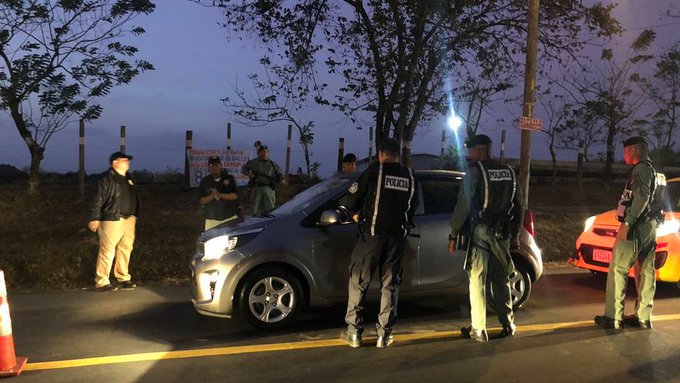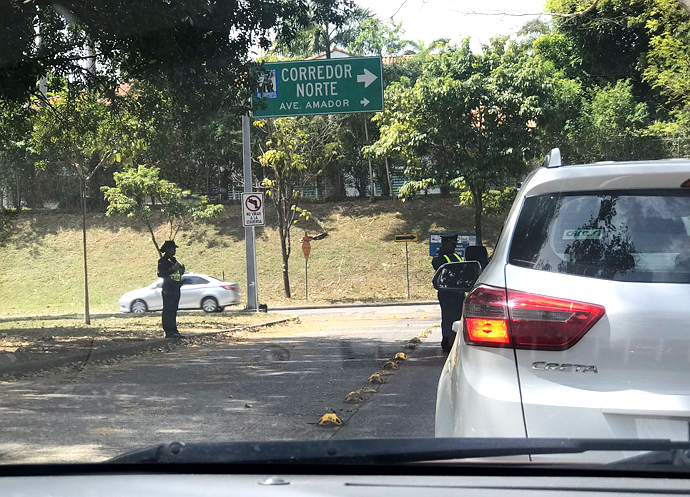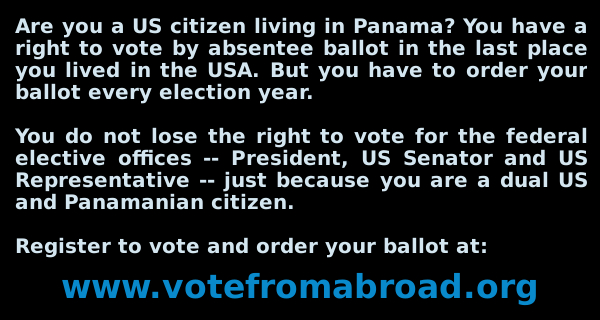Are your papers in order? They don’t want Mr. Ventura to escape the country on a yacht.
Serial killer walks out of prison, cabinet ministers lose their jobs
by Eric Jackson, photos taken from Twitter
Gilberto Ventura Ceballos came to Panama from his native Dominican Republic as a prison escapee. He was doing time there for gang membership and kidnapping a businessman of Chinese descent. The escapee made his way to La Chorrera, opened a cell phone business and picked up his criminal career where he left it off in the DR.
By outward appearances a psychopath, Ventura kidnapped five young Panamanians of Chinese ancestry, children of local businesspeople between the ages of 18 and 27, and demanded ransoms. Mostly the ransoms were paid — nearly a quarter-million dollars in all — but those who had been abducted were killed and buried under Mr. Ventura’s house. In at least some of the cases the victim was dead before the ransom demand was made.
Panama’s Chinese community, established here for more than 150 years, still generally clings to some Confucian traditions, one of which includes great deference to authority. But in this crime wave that took place in 2010 and 2011, the families and community believed that not only did the National Police take an unacceptably lax attitude, but also that there were individual officers involved in the crimes themselves. There was a one-day Chinese community business shutdown across much of Panama, and the community held protest marches and vigils in La Chorrera. Such public demonstrations of dissatisfaction with a government’s performance were and are very out of character for Chinese-Panamanians.
The police steadfastly denied involvement or error of any sort. The National Police director at the time, Gustavo Pérez, said that Ventura definitely had accomplices, whom investigators had identified. In the end, Ventura and one accomplice, fellow Dominican Alcibiades Méndez, were convicted for the abductions and slayings.
In 2016 Ventura escaped from prison and from the country, with the assistance of those guarding him and very likely other authorities, some of whom were detected and brought to justice. Eventually Ventura was found working in a restaurant in Costa Rica and sent back here to serve his 50-year prison term in the highest security unit in the La Joya prison complex.
Then, the presently ongoing escape. For that, Ventura needed to get through five different electronically controlled doors and past dozens of video monitors.
On his approximately nine square meter cell, two bars were found sawed through with marquetry saws — which had to be smuggled into the prison with the negligence and most probably connivance of the police and custodians guarding Ventura. It might have been how he got out of his cell, or a ruse. There were no signs of forced exit at any of the four other barriers, electronically controlled by multiple police officers ranging from sergeants to a commissioner. The prison administrator watching La Joya’s video monitors raised no alarm.
Two days after Ventura’s flight, police officers and at least one dog swarmed the outside of La Joya, saying that they were looking for Ventura’s trail. There was a lot of sarcastic commentary about this in the social media, but it was likely not an exercise that would lead directly to the capture of the long-gone inmate, but a process of elimination in the prosecution of those who helped him escape. The National Police announced that Ventura had not gone over or through the fence, but walked out past the guarded perimeter.
Three police officers have been charged with helping Ventura escape. Their names and ranks have not been disclosed to the public. They are under arrest and facing, apparently prior to ordinary criminal charges before the regular courts, court-martial proceedings before a police tribunal. It appears that the end of the internal proceedings is to strip the accused of their status and special protections as police, so that they might be sent to regular prisons. They would have to be kept in isolation from mainline prison populations to survive that ordeal — perhaps in solitary confinement, perhaps grouped with child molesters and gangsters who have turned state’s evidence and other underclasses of the criminal world. An angry President Cortizo said that the accused had betrayed the police force, their families and their fellow Panamanians. Nito said that there would be others removed from the force as well.
We don’t know the conversations between Cortizo and his now former Security Minister Rolando Mirones. A lawyer by profession, Mirones has had a bad run. He got mixed reviews for his opposition to the years-long moratorium on the importation of guns for and issuance of gun permits to civilians, but the Cortizo administration did led the moratorium lapse early this year. Persistent violence against women and some insensitive statements by subordinates made Mirones the target of feminist criticism. And then a gang war broke out in December, doubling the national homicide rate for that month and January as compared to a year before.
The most spectacular event was a December 17 prison riot involving AK-47 assault rifles and 9mm pistols that the now split Bagdad gang had stashed in a little cave under their cell block in La Joyita. That contraband and its hiding place may have been there since before Cortizo and Mirones took office. It certainly came into the prison with the connivance of authorities. The warden, a guard in that cell block and the national prisons director all lost their jobs, but nobody has been charged with the crime of smuggling that ordnance into the penitentiary. The death toll was 13, with 14 injuries. More than a dozen gangsters face trial for that.
The violence in the Bagdad split likely started a few days before the massacre at La Joyita with shootings in Panama City. After the prison meltdown the violence swept across the metro area on both sides of the canal, most prominently in Arraijan. Two notable incidents stand out:
- A double murder by an illiterate Guna teenager and his subsequent release by a judge because he was questioned without a lawyer or notification of his family. Mirones criticized that decision, and in turn drew criticism as an executive branch official meddling in judiciary affairs; and
- A late night massacre of a family of three, including a two-month-old baby, by four men armed with assault rifles. The suspects are known, with wanted posters and rewards out, but only one has been captured.
Particularly in Ricardo Martinelli’s sensationalist media but also from a much broader section of the population, a lot of blame for the violence had been assigned to Mirones. Then came the Ventura escape and with it evidence of a pervasive, sneering corruption in the police force command structure.
So Mirones resigned as security minister. Whether this was his personal choice or at the president’s request has not been made clear. In accepting Mirones’s resignation Cortizo opined that the outgoing minister had done nothing wrong and was confronted with serious and deeply rooted problems that will take time to resolve.
In Mirones’s place Cortizo appointed Juan Pino, a career naval officer who had been commander of SENAN, the National Aeronaval Service. Since the 1989 US invasion it has always been controversial to put a uniformed officer in a cabinet post in charge of the police forces, so Pino’s elevation to security minister has drawn criticism on that basis.
Cortizo also dismissed Minister of Government Carlos Romero, whose ministry includes control over the civilian prison bureaucracy. A replacement for Romero was not immediately named, as there are apparent political complications. Cortizo’s Democratic Revolutionary Party (PRD) has as a junior government coalition partner the Nationalist Republican Liberal Movement (MOLIRENA) and Romero was one of the latter. It seems by the inter-party pact MOLIRENA is owed a cabinet post, perhaps not this one if other shifts might be made in the Cortizo team.
Will National Police director Jorge Miranda also go? There has been speculation about that. And what about all the police corruption? The Cortizo administration has moved to set aside Varela administration law enforcement promotions made outside of the established chains of command and promotion schedules. One of Cortizo’s predecessor’s favorite games was to create some task force with badass uniforms and commanded by people selected without respect for seniority or ability. Now, after the dissolution of these units into the regular force, there are legal questions about their officers’ rights to rank and pay.
Although the recordings have not been released to the public, the charges against the three cops charged so far with helping Ventura escape are based on things recorded prison surveillance cameras. Miranda said that Ventura’s escape from his cell took place at 10:23 p.m. on Monday, February 3 and that he was seen on camera with police officers at another part of the prison at 10:30. It is reported that a civilian guard on the next shift found Ventura missing from his cell at 5:45 the next morning. The police dragnet along the roads and at likely points of exit from the country went up two hours later. Most likely the hours of head start that Ventura got also implicate people on the police force that guards ingress and egress at the prisons and from the civilian force that runs the prisons.
Perhaps a footnote to this story is the January 30 home invasion murder of a National Police second corporal at his home in Chepo. It was reported as a robbery attempt, but not an ordinary one. The intruders demanded something specific of the officer, who had been working in Colon, and when this was not forthcoming they shot him five times and fled. There has not been the usual ceremony, but rather statements from Miranda that the investigation about exactly what happened and why is ongoing.
President Cortizo is facing a long-running and deeply rooted law enforcement scandal that is not of his making. We shall see what he and Security Minister Pino will be able to do about it.

The Ventura escape is not just a police matter. It’s a continuing annoyance to drivers, as checkpoints are still up all around the county. It has also been the bane of people with outstanding arrest warrants, more than 100 of whom have been arrested by cops looking for Ventura, and of a few other people found carrying illegal drugs or weapons.
Correction: In an earlier version of this story it was reported that no accomplice in the La Chorrera kidnappings and murders was brought to justice, when actually accomplice Alcibíades Méndez was arrested before Ventura and was convicted.
Contact us by email at fund4thepanamanews@gmail.com
To fend off hackers, organized trolls and other online vandalism, our website comments feature is switched off. Instead, come to our Facebook page to join in the discussion.
These links are interactive — click on the boxes












